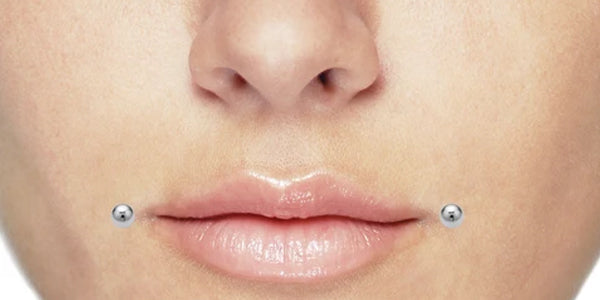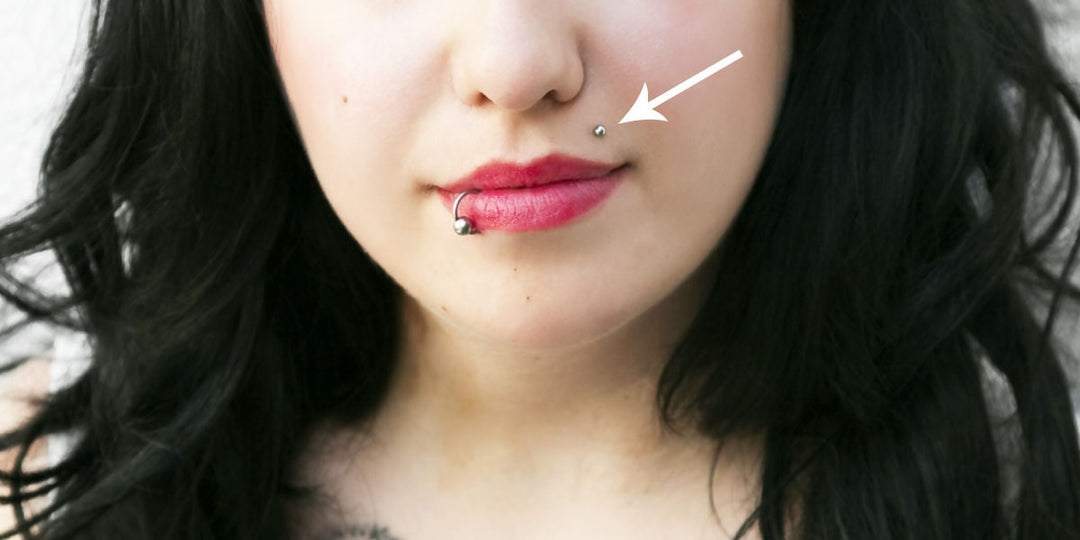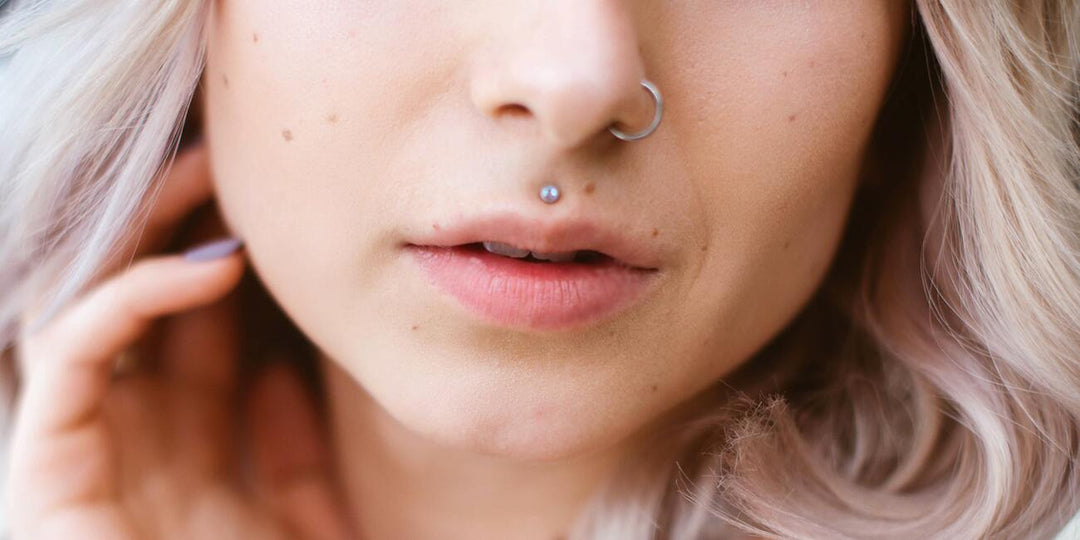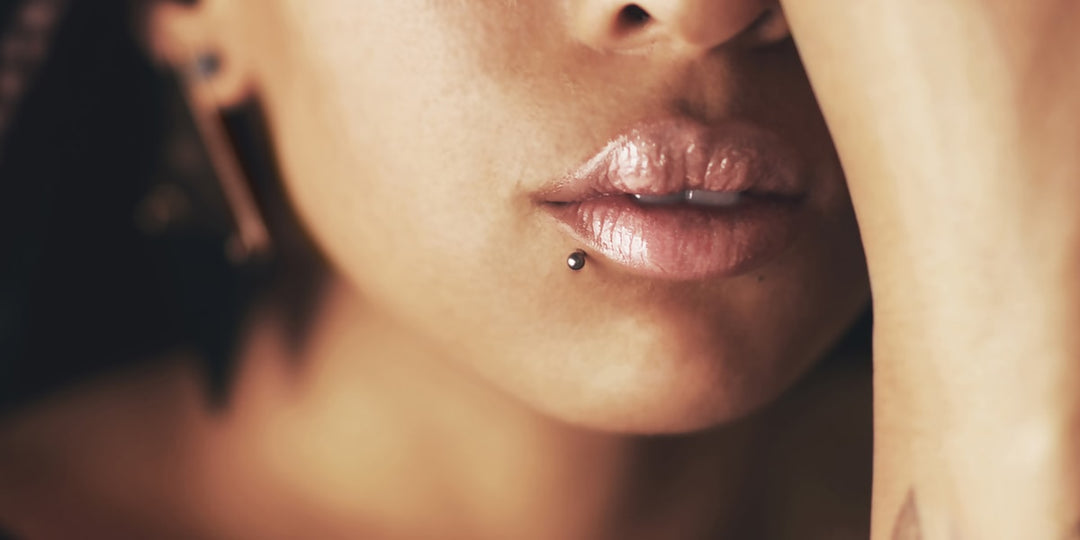The Dahlia (Joker) Piercing: Everything You Need To Know


Named after the Black Dahlia—an actress who was mysteriously and horrifically murdered in the 1940s and left with a smile carved into her face—the Dahlia piercing certainly offers an edgy aesthetic befitting the name.
Also referred to as the Joker piercing (for those looking for less macabre roots), the Dahlia piercing consists of two piercings at the corners of the mouth.
This piercing creates an alluring look, especially for those wanting to draw attention to their lips. (This style tends to look fantastic on those with lips that turn upward at the end.)
If you’re looking for a piercing that won’t have to compete for attention, consider the Dahlia; it’s one of the less popular piercing types, and it’s unique even among piercing communities. However, it’s rarity makes it difficult to find an experienced piercer, and it requires exact placement in order to properly achieve its aesthetic.
Here’s everything you need to know before getting a Dahlia piercing.
Related Products
View allHow Much Do Dahlia Piercings Hurt?
It might seem as though the flesh at the edges of your mouth would be extra sensitive, but the Dahlia piercing actually falls lower on the pain scale than other lip piercing types. Since it’s a double piercing, you will need to undergo the needle twice, so if you have a low pain tolerance or qualms when it comes to needles, consider waiting a week or so in between piercings.
Dahlia Piercing Healing Process
Dahlia piercing healing times range greatly; you can expect anywhere between 12 weeks to upward of 20 weeks for healing (and some take even longer).
The discrepancy of healing times often comes down to aftercare practices. Like cheek piercings, the location of Dahlia piercings introduces them to food debris and other harmful substances in the mouth. You need to make sure that you’re cleaning your Dahlia piercings multiple times a day, inside and out, to keep them free from harmful substances.
Aftercare Rules
Dahlia piercings are especially susceptible to infection from mouth-borne bacteria as well as rejection and migration due to constant movement in the cheeks. Much of the complications that surround Dahlia piercings can be avoided if you practice proper aftercare.
Conduct a sea salt soak 2 - 3 times daily and rinse your mouth with salt water. Unlike other lip piercing types that are primarily located toward the front of the mouth, the Dahlia piercing is located closer to your molars, where you do the majority of your chewing. Because of this, food can easily slip into the healing piercing. To flush debris out, conduct a sea salt soak 2 - 3 times daily throughout the entire healing process. After you eat, it’s also a good idea to gargle salt water to help clean the backside of your piercing. You can also get mouth rinse specifically for healing oral piercings. DO NOT USE MOUTHWASH. The alcohol in mouthwash will irritate the piercing and prolong healing.
Be careful when you chew. The unique location of the Dahlia piercing also means that the jewelry will be easy to chomp upon. This could lead to broken teeth, and if you end up tugging at the piercing, it could cause piercing rejection. In the initial weeks of healing, consider sticking to soft foods as you get used to the jewelry.
Keep up good oral hygiene. Don’t be afraid to carry a travel toothbrush with you to brush your teeth in between meals. Bacteria grows quickly in the mouth, and it’s a good idea to give your piercing its best chance by cleaning your mouth often.
Dahlia Piercing Jewelry Styles
By far, flat disc back labret studs are the most common jewelry for the Dahlia piercing. The small beads at either side of the mouth accentuate the smile look. Most are pierced with a 14G needle, but if you prefer daintier jewelry, you can also get pierced at 16G.
Labret studs come in a variety of styles, from the classic ball end to gemstones and charms. Explore your options to determine your favorite Dahlia look.
If you really want to get unique, Dahlia piercings accept curved barbells and captive bead rings as well.
Why Shouldn’t I Get A Dahlia Piercing?
The Dahlia piercing will require vigilant aftercare practices, and you need to be prepared to commit to a long aftercare process. If you know that you’re not great at piercing aftercare, then you should choose an easier piercing.
Dahlia piercings have a good risk of rejection. If you’ve had issues with rejection in the past, talk to your piercer before trying the Dahlia piercing.
How Much Will It Cost?
The Dahlia piercing will, on average, cost around $70 (although, this number will be more or less depending on where you’re located).
Since the Dahlia piercing is rarer than other piercing types, you might have difficulty finding a piercer who has done the Dahlia before, especially if you’re in a more rural area. The Dahlia piercing will need to be carefully placed, so it’s important to find a piercer who is experienced.
If you live in an area where piercers are scarce, this is one piercing you’ll want to consider travel for; it’s better to turn your piercing experience into a weekend adventure than it is to choose a piercer without experience.










